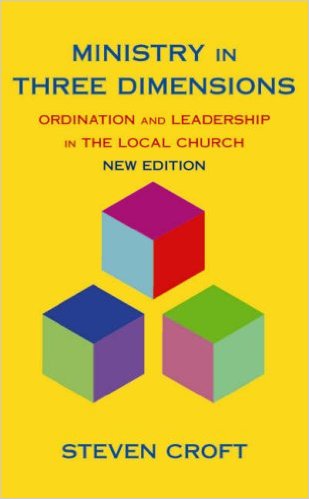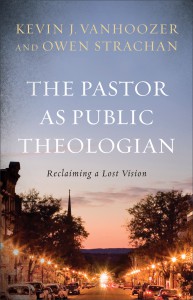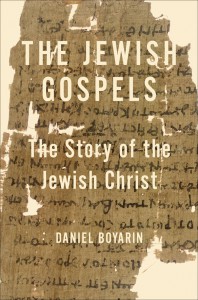 The church often wrestles with the times in which it finds itself. It’s a good and godly thing. Identity and purpose are reappraised as eternal foundations are sought out in the midst of shifting cultural sands.
The church often wrestles with the times in which it finds itself. It’s a good and godly thing. Identity and purpose are reappraised as eternal foundations are sought out in the midst of shifting cultural sands.
Over the years Gill and I have been a party to this wrestle, at local congregational level and also within wider networks and systems. Invariably, at some point that wrestle faces a particular collision: One that is between the sense of vocation and call that Christians experience individually and collectively, and the historic structures of ministry in the Anglican Church. As we grapple with the mode and manner of ministry of the whole body (laity), questions arise about our particular threefold ordering of deacons (diaconate), priests (presbyterate), and bishops (episcopate). What do they mean? What are they for? What do they do? And how might they help (or hinder) the mission of the whole people?
This is often a constructive collision. It can assist innovation and avoid disconnection. We have, for instance, seen the creativity of “locally ordained ministry” in which long-term locals are authorised to exercise ordained ministry as part of a “local ministry support team.” We have seen the value of ordaining not only those who will serve the church in its modal, geographical form, but also where the church is a sodality, in chaplaincy, advocacy, and education. We have walked the “normal” paths of affirming a call to ordination: academic training then being deaconed and priested within a curacy. We have also trodden forgotten paths in which a call to the distinctive diaconate is affirmed from within the integrity of life experience.
I have been ordained as a deacon and a priest in the Anglican Church. Gill has been ordained as a deacon. We are both members of the people of God.
In this ecclesial wrestle, this vocational collision can often be a churning confusion of language and expectation. It is a touchstone of the malaise of the western church: we don’t know what we’re for anymore. As well as the different emphases of each individual’s (lay or ordained) sense of ministry call, there are often wildly different expectations that attach to the ordained ministry and its offices. Throw into the mix the usual divisors of churchmanship and talking about the three orders becomes a fraught topic. Many avoid delving in too deeply, preferring that safe ambiguity which is the usual descriptor of default Anglicanism.
I am delighted, then, that Steven Croft, soon to be my new diocesan bishop here in the Diocese of Oxford, has dared to delve into and delight in the threefold order. His Ministry in Three Dimensions is apparently standard fare for ministry training here in the UK. This was my first time picking it up; I read the 2008 new edition of the 1999 original. I’m glad I did. It’s a useful stimulant for some ecclesiastical torpor.
Bp. Steven speaks of three dimensions rather than orders and this is helpful. It allows him to describe and demarcate diaconal, presbyteral and episcopal distinctives, without being restricted by the boundaries of the orders. It means that throughout he can not only remind us, for instance, of the diaconal dimension of a bishop’s ministry, but also of the episcopal dimension of a deacon’s. This is helpful.
For Bp. Steven, this “three-dimensional” ministry is for the “proper ordering and care of local congregations” that is “different and parallel” to the “‘charismatic ministries’ given to different individuals by the gift of the Holy Spirit for the building up of the whole body.” (p38).
I am not entirely convinced by the distinction this makes. It is helpful with respect to the general list of charismata in, say, 1 Corinthians 12:1-11. However, I would have liked to see a tighter interaction with the the five-fold gifts of Ephesians 4:11-14 where Paul is being quite particular and deliberate. His framework places a demarcation between “proper ordering and care” (3-d) and “building up the whole body” (5-fold) that prevents some useful correlations.
Nevertheless, the focus on the three dimensions allows us to turn “not to the broken cisterns of secular management theory, but to our springs of living water; the God who speaks through Scripture and has continued to speak in new ways through Scripture throughout the history of the Church.” (p41). As one who shares the “deep dissatisfaction” (p25) with the pop-psych pontifications of programmatic pastoring, this is encouraging.
The book is divided into three parts for each of the dimensions of ministry:
Bp. Steven’s treatment of diaconal dimension dignifies what is often overlooked.
The diaconal tradition within the New Testament can be traced very easily directly to Christ himself and to central strands of Jesus’ own self understanding; to the pattern of the incarnation; and to the Old Testament background which helped form Jesus’ own identity. Of the three concepts which we will explore and which came to be used as titles for Christian ministers, that of deacon has the richest and the deepest theological tradition of all.” (p45)
He is convinced of the theological arguments for the restoration of a permanent diaconate (p59) and expounds something of this in the new edition’s chapter on mission-shaped church. There he identifies a “natural connection between pioneer ministry and the tradition of ministry as diakonia” (p201). This connection springs from the characteristics of diaconal ministry which he identifies as:
- Simple, hidden, practical acts of service(p68).
- Outward focused service to the wider community (p70) which resists the “centrifugal” self-referential tendency of church organisations (p70).
- Competent and careful administration (p72).
- Listening to others (p73), including the “story of the church… as told by a cross-section of different people… to lay a very necessary foundation for any common vision which may arise.” (p75)
- A servant-hearted attitude and integrity. (p76)
- Expressing a spirituality of trust which “waits upon God and listens to God for his priorities and his way forward for a particular local church…” (p78).
- Serving and being served allowing “other people to care for us”and therefore expressing mutual service (p81).
Gill and I always welcome any attempt to deepen understanding of diaconal ministry. We have come across so many situations where it is reduced to a liturgical function, or considered to be merely menial with tasks pertaining to a first-year curate only! Rather, there is a form of diaconal leadership that when embraced and released is a phenomenal resource, as it connects to and extends the operation of the other dimensions.
“Leadership alongside” is a key aspect of the distinctive diaconate. Perhaps it’s best instantiated when archdeacons lead alongside their bishops. A deacon not only supports episcopal leadership practically, but by drawing that leadership forwards into and with the awareness of listening and discernment, and the spirituality of trust and waiting. This can look like encouragement, sometimes like challenge and godly provocation. But diakonia and episcope need each other. Disconnected from diakonia, episcope strives, often with hollow diminishing returns. Disconnected from episcope, diakonia shrivels and dies, or simply bursts with uncontainable awareness.
There’s a line from a song, about a husband and wife remembering and celebrating their pioneering life. One of the lines describes the mutual service of husband and wife and says: “If I forget my name… remind me.” Applied more generally, that is what diaconal ministry brings. It reminds all dimensions of ministry of who we are, even (and especially) if we don’t want to hear it.
Bp. Steven’s consideration of the presbyterial dimension draws on pastoral/shepherding aspects of Christ’s ministry and, unsurprisingly, emphasises the ministry of word and sacrament. What he is able to avoid is a reductionism:
The ministry of the priest does not consist of only that which a priest and no-one else can do. To argue this is to shrink priestly ministry only to presiding at the eucharist and pronouncing absolution. Rather, priestly ministry is better seen as a particular combination of ministries, clustered around the ministry of the Word and of the sacrament. (p106)
His consideration of Word ministry moved me as I am only sometimes moved. Here is a consideration of preaching and exposition that is antidote to the prevailing “nice sermon, vicar” dilution in common church life. Not only does he emphasise the depths (and privilege) of bringing “a congregation into contact with that living word of God; and the word of God into contact with the congregation through regular biblically-centred preaching” (p114) but he also recognises the importance of proper apologetics and teaching on “the great issues of life”, applying the Word not just “in-house” but to the “whole of creation” (p115).
His consideration of sacramental ministry not only picks up on Baptism and Holy Communion but on reconciliation and leadership in prayer and blessing. He draws out the presidential aspects of this dimension (although he rarely uses that language) by which a congregation is lead into an engagement with God’s grace through imitation and participation.
Of greatest importance, however, is the section which emphasises “hidden intercession” (p133). It is here that the very real burden of pastoral ministry is acknowledged. I have often associated this with an apostolic burden as it is a hallmark of the apostles’ ministry in the New Testament. But the attachment to eldership is sensible. Certainly, when I look for those who will join a true leadership team, i.e. one that is concerned with purpose and direction more than management and maintenance, I look for those who are finding themselves strangely moved with a spiritual burden for God’s people. Such as these will step off the vocational cliff, so to speak, and find God lifting them up.
Bp. Steven does well to refer to the New Testament language of a presbyter “agonising” and “wrestling” (p134) for individuals and for the church as a whole. Such things are integral to this dimension of ministry. It is in the gift of tears, that we encounter the sufferings of Christ for his people, and can place the church (and therefore our hopes and dreams, our reputation, and energy) in his hands and not cling. It is a parental burden, in the best sense of it, which leads to that “particular quality of holiness which we find in Christ: joyful yet long-suffering and compassionate; righteous yet not judgemental; free yet disciplined; accessible yet profound.” (p137)
With respect to the episcopal dimension Bp. Steven identifies aspects of ministry that are increasingly be expected of “ordinary” ministers (lay and ordained) and not simply those who hold the office of Bishop. He sums it up:
“…the mission context in which the Church now finds itself is calling for a shift in the balance between the different dimensions of ministry. Gifts which have not been traditionally part of the diaconal or priestly calling are increasingly demanded of the clergy: the gifts of intentionally enabling and building community; the gifts of discernment in identifying the charisms of others and enabling them in ministry; gifts of collaboration, of vision; and of guiding a Christian Church through a period of change.” (p141)
Drawing on the famous Acts 20:28 in which Paul exhorts elders to “keep watch over yourselves and all the flock of which the Holy Spirit has made you overseers” he does very well, in the new edition’s chapter, to locate “watching over yourself” at the forefront of the episcopal dimension (p205). This self-watching is not only essential for self-care and avoiding burn out, but for the maintenance of the essential spirituality of episcope. Bp. Steven notes the spirituality of diakonia as “learning to listen to God” characterised by integrity, of presbyteral ministry as intercession characterised by holiness, of episcope as discernment characterised as responsible initiative. Watching over oneself gives attention to these crucial aspects of spirituality. In the end the overseer must know to trust God that responsible initiative will be vindicated, and so resist the tainted and dangerous waters of disillusion.
The other foci of the episcopal dimension are profound in that they highlight a paucity in many contemporary churches. Many churches these days resist a “vicar does everything” only to “take on a concept of ministry in which the ordained decide everything” (p170). Against this, the episcopal dimension works towards a dynamic unity through the enabling, developing, and sustaining of the ministry of others (p143).
There, is therefore, an interaction with that fundamental wrestle of the church to be who it is called to be… without being lost in itself. Bp. Steven helpfully identifies a paradox in which the focus on mission can end up, ironically, as a cause of self-focus! (p169).
A local church is never a static community but, ideally, on which is moving forward together towards common goals. Catching, developing, articulating and sharing common vision for that process is a vital part of the exercise of this kind of leadership. (p155)
There is a tendency for growing churches to become centrifugal in respect of the energy of their lay members as well as of their clergy, and for the horizons of effort and of personal development to shrink to that which benefits the life of a single church. Part of the task of episcope is to ensure that a congregation’s horizon in respect of their vision is clearly set upon the building of the kingdom of God throughout the world, not simply the development of a single congregation in a single place. (p167)
The image of “rhythm and road” (p158) is a brilliant framework for avoiding this paradox. Here, the rhythm of the church is its worship in word and sacrament especially. The road is that of “discipleship and of learning the Way” (p158). It is the episcopal dimension to help the church meet the challenge to “weave and shape its life around both rhythm and road.” (p159).
In the area of discipleship Bp. Steven is a respected voice. His insights into the need for structures to service discipleship and not vice versa (p175) are welcome. Similarly, he embraces discipleship principles such as having “low initial training, high ongoing support” (p178). It will be interesting to see how and where he applies these sorts of things in his Episcopal (with a big E) ministry in Oxford.
If there is one area he could have emphasised more, particularly with regard to the area of maintaining unity in mission, is that of spiritual warfare and the related area of conflict. In our experience, it is in these bitter times that we have come to rely more closely on the Spirit and trust the witness of Scripture. It is helpful, in our view, then to connect the episcopal dimension with the apostolic witness more than Bp. Steven chooses to, even though he refers to “those who are called and sent by God are themselves to be senders and enablers as that mission is extended in each generation” (p165), which is the very essence of an “apostle”, i.e. a “sent-one.” There is a sense in which episcope travails beyond concern for the church but in itself encapsulates an apostolic kenosis, a weakness through which God is glorified. That willingness to be made “fools for Christ” (and worse) that we see in 1 Cor 4:1-13 and the like is the ground of episcopal authority, that would both answer the enemy, and lead the church, with the way of the cross. In short, in the episcopal dimension the cost of mission is counted in a unique way, where moving forward is to die a death and receive life as a gift.
As the church wrestles with the reality of itself, there is a need for the deep thoughts presented in this book. Too quickly we run to titles and labels and structures as self-evident, when it is the substance not the form that counts. This book is useful for those training or exploring their own vocation (in whatever dimension). But it has best benefit for those who are participating in that fundamental wrestle with reality – who are we? And how do we be the people of God?
 It’s always great to get in conversation with stimulating people who understand the dynamics of mission in the church and all that’s in play and at stake when pioneering is needed. One of the things that happens is that words and phrases get used that state a concept or an experience that you’ve always been aware of but have struggled to describe. With new words comes an opportunity for reflection.
It’s always great to get in conversation with stimulating people who understand the dynamics of mission in the church and all that’s in play and at stake when pioneering is needed. One of the things that happens is that words and phrases get used that state a concept or an experience that you’ve always been aware of but have struggled to describe. With new words comes an opportunity for reflection.



 One of the most important dynamics in living churches is that of intentional one-on-one relationships that help individuals mature in their faith. We have our Sunday gathered worship times, and our small groups, and prayer triplets and things like that, but intentional personal investment is invaluable. Many of us can reflect on the individuals who have invested in us over the years, be it formally or informally; they are invariably God’s gift to us.
One of the most important dynamics in living churches is that of intentional one-on-one relationships that help individuals mature in their faith. We have our Sunday gathered worship times, and our small groups, and prayer triplets and things like that, but intentional personal investment is invaluable. Many of us can reflect on the individuals who have invested in us over the years, be it formally or informally; they are invariably God’s gift to us. This book comes from Welsh retreat centre
This book comes from Welsh retreat centre  After returning from our recent visit to Ffald-y-brenin, Gill and I have been pondering these things. What I have read of here, and what we have encountered has informed our dissatisfaction. It has renewed our passion for God’s Word and Spirit, and a determination to rely on him, rather than to burn-out in our own strength.
After returning from our recent visit to Ffald-y-brenin, Gill and I have been pondering these things. What I have read of here, and what we have encountered has informed our dissatisfaction. It has renewed our passion for God’s Word and Spirit, and a determination to rely on him, rather than to burn-out in our own strength. Like churches themselves, there’s a tendency for those of us in pastoral ministry (ordained and lay) to become
Like churches themselves, there’s a tendency for those of us in pastoral ministry (ordained and lay) to become  I have learned that the Scottish love Scotland. And the Welsh love Wales. But do the English love England?
I have learned that the Scottish love Scotland. And the Welsh love Wales. But do the English love England?
 I have an ongoing interest in the interaction between first-century rabbinical Judaism and Christianity. On each exploration I find increased depth and colour to my reading of the New Testament. I picked up Boyarin’s book The Jewish Gospels on something of a whim and for the title alone.
I have an ongoing interest in the interaction between first-century rabbinical Judaism and Christianity. On each exploration I find increased depth and colour to my reading of the New Testament. I picked up Boyarin’s book The Jewish Gospels on something of a whim and for the title alone.
